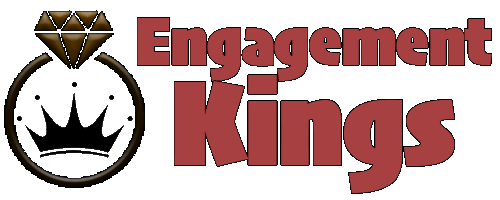Getting engaged within a year is common, with around 30% of couples deciding quickly. Each relationship is unique, so it’s crucial to gauge emotional readiness and align on life goals. Moving in together and handling challenges can solidify commitment. However, rushing may cause you to overlook significant partner traits, so pay attention to red flags like unresolved conflicts or value differences. Open communication about future plans strengthens compatibility and guarantees mutual respect. Taking time to recognize fundamental milestones can inform your decision. By exploring these aspects, you’ll gain confidence in determining your relationship’s readiness for engagement.
Understanding Engagement Timelines

When you’re considering the right time to get engaged, it’s important to understand that engagement timelines can vary widely. The decision to get engaged is deeply personal, influenced by the dynamics of your relationship and how long you’ve been together.
While some couples feel the right time is between 3 to 8 months, others may wait up to 2 years or more. It’s essential to reflect on your unique situation rather than comparing yourself to others.
Statistics show that about 30% of couples choose to get engaged within two years of dating. This trend suggests that many feel a strong connection and readiness relatively early in their relationship.
However, the right time for you depends on various factors like cultural expectations and personal readiness. Rushing into engagement within a month might overlook certain aspects of your partner that only time can reveal.
Essential Relationship Milestones
As you consider the right time to get engaged, it’s helpful to recognize the key relationship milestones that often lead couples to this decision within a year. One significant milestone is moving in together, which many couples achieve within the first few months. This step allows you to understand each other’s daily habits and quirks, solidifying your bond.
Reaching the stage of emotional readiness is another essential aspect. After the initial honeymoon phase, usually around six months, you’ll have a clearer sense of your partner’s long-term traits and compatibility. This deeper emotional connection often influences the decision to get engaged within a short timeframe.
Another important factor is the commitment timeline. Around 30% of couples choose to get engaged within two years, and those who decide sooner often have experienced key moments that confirm their readiness for a lifelong commitment. This includes handling challenges together and providing mutual support.
Understanding these relationship milestones can guide you to make a thoughtful decision about engagement. By acknowledging these markers, you’re more likely to build a solid foundation for your future together, ensuring that your journey toward marriage is both meaningful and well-considered.
Recognizing Red Flags

Although getting engaged within a year can be exciting, it’s vital to recognize red flags that might indicate potential issues. Before you change your relationship status, you should know your partner well enough to spot any significant differences in values or life goals. These differences can be red flags, signaling that the relationship may struggle under the pressures of marriage.
It’s important to ascertain that you’re not rushing into getting engaged after 1 year without addressing these concerns. Effective communication is key in understanding each other. If you notice unresolved conflicts or a lack of communication, it might indicate that you’re not ready for engagement.
Persistent doubts about the relationship, such as feelings of insecurity or pressure from family and friends, are also signs that it may be too soon to propose. Be mindful of major disagreements or concerns that remain unaddressed. Engaging too quickly without resolving these issues can lead to misunderstandings and dissatisfaction later.
It’s crucial to take the time to navigate these challenges together, guaranteeing that your relationship is built on a strong foundation. Recognizing these red flags early can help you make a more informed decision about your future together.
Communication and Compatibility
Jumping into engagement within a year requires you to prioritize strong communication and compatibility. Effective communication is key to guaranteeing both of you share similar expectations about your future together.
It’s important to discuss your feelings openly and address any potential conflicts head-on. By doing so, you increase your compatibility and readiness for commitment, building a foundation of mutual respect and understanding.
Mutual respect is another cornerstone of a healthy relationship, especially when considering a quick engagement. Respecting each other’s opinions and values fosters a deeper emotional intimacy, helping you navigate challenges as a team.
This emotional intimacy not only strengthens your bond but also makes quicker engagement decisions more viable.
Sharing values and visions for the future together enhances your confidence in the relationship. Couples who align on life goals and priorities are more likely to feel certain about taking this significant step.
As you consider engagement within a year, verify that your compatibility extends beyond surface-level attractions. Explore conversations about your long-term plans and shared dreams.
Evaluating Readiness for Engagement

Evaluating your readiness for engagement starts with reflecting on your emotional preparedness and compatibility.
Emotional readiness means being able to handle the highs and lows of a committed relationship, guaranteeing you’re both on the same page about your future together. You need to assess whether you genuinely understand each other’s long-term goals and values, as these are essential to a successful engagement.
Open communication is key. Discussing future plans, including children and finances, helps you address any potential compatibility issues early on. It’s critical to recognize if you’re both willing to work on any unresolved conflicts that might arise. This proactive approach can prevent misunderstandings and guarantee a smoother shift to engagement.
Be aware of the honeymoon phase, especially if you’re considering engagement within 3 to 6 months. Intense emotions can cloud judgment, leading to overlooked compatibility issues. Before committing, confirm you’ve thoroughly explored each other’s habits and beliefs.
Commitment isn’t just about being in love; it’s about making a conscious decision to support each other through life’s challenges.
Conclusion
In the whirlwind of romance, getting engaged within a year can seem thrilling, but it’s essential to guarantee you’re truly ready. Focus on understanding each other deeply, recognizing red flags, and building strong communication skills. Don’t let societal pressures rush your decision; instead, evaluate your compatibility and shared goals. By taking a thoughtful approach, you lay a solid foundation for a lasting relationship, guaranteeing the love you cherish today will endure for years to come.



